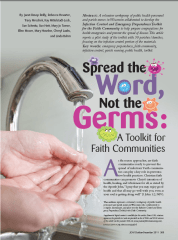A Focus on Meaning and Attitude: This Week’s Nursing Blog Post Suggestions
By Jacob Molyneux, AJN senior editor
 ‘Autumn Washed Away,’ Diane Hammond/ via Flickr
‘Autumn Washed Away,’ Diane Hammond/ via Flickr
Here are a few recent posts by nurses that you might find of interest. As I put this together, a theme emerged, so it seemed fair to just go with it. Maybe the approach of these bloggers has to do with the time of year, the shorter days and colder weather as we approach the winter holidays . . .
At the intriguingly titled Nursing Notes of Discord blog, there’s a short reminder post with a fairly straightforward descriptive title: “Anyone Can Make a Positive Difference.” And, the author points out, you “don’t even have to be a nurse” to do so.
At Digital Doorway, Nurse Keith has a recent post that also focuses on positivity, this time about one’s profession: “For Nurses, ‘Just’ Is a Four-Letter Word.”
At HospiceDiary.org, in the lovely post “Leaves, Geese and Other Ramblings”—as the below quote may suggest—we find another angle on this theme of being present and focusing on the good in the midst of sometimes constant, poignant awareness of change, loss, dying, and rebirth:




